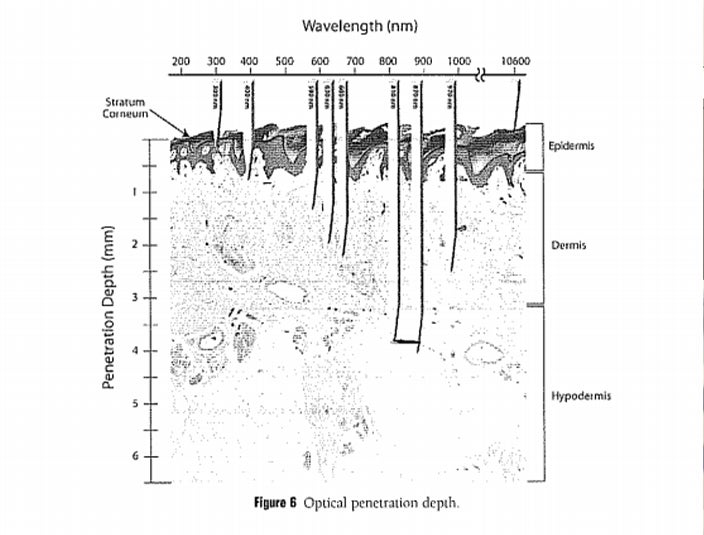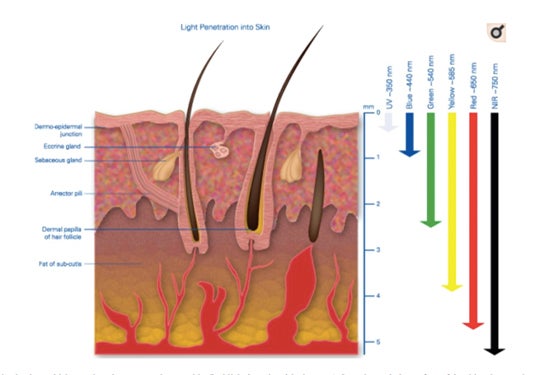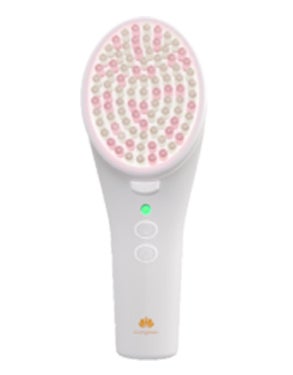Many ancient cultures, such as Greece, Egyptians, Romans, and Incans, have discovered the health benefits of sunlight and use various forms of sun exposure to treat diseases. In the 19th century, Niels Finsen observed that the sun helped with his symptoms of Niemann-Pick disease and that animals sought sun exposure, so he started studying the healing effects of lights scientifically. In 1903, he was awarded the Nobel Prize in Medicine for his discovery of phototherapy.2,3
Light therapy (phototherapy) refers to the use of light at specific frequencies and intensities in order to affect our physiology. In most cases, the effects of light therapy are not mediated through eyesight, but rather by the lights directly affecting the target cells.
Phototherapy has been clinically studied for over 100 years. Currently, many light spectrums are now prescribed as medical treatments. Example of light therapies include:
- UV light exposure to increase vitamin D levels and manage autoimmune or allergic skin conditions, such as psoriasis, vitiligo and eczema4
- White, blue, or blue-green light exposure to manage jaundice in newborns5
- Bright blue or white light therapy to manage seasonal affective disorders, circadian rhythm disorders, and jet lag6
- Red light and near-infrared wavelengths to energize the mitochondria through photobiomodulation, which can have anti-aging, wound healing, and anti-inflammatory effects7
On the other hand, the sight of colors has been related to health benefits, especially in traditional medicine such as chakra and Ayurveda.8 More recently, several scientists scientifically examined how colors affected us and the possible uses of color therapy (chromotherapy).
It is important to understand that phototherapy is different from chromotherapy. In this article, we will cover the definitions, the scientific evidence, and the different uses of each.
Infrared light therapy is a form of light therapy, which involves getting exposed to sufficient intensity of infrared light to experience health benefits. The infrared spectrum is the invisible light with frequencies below that of the red light. It is why we feel gentle radiant heat when we are exposed to the sun because infrared creates heat in our tissues. However, the infrared spectrum also affects our physiology in other ways.
The infrared spectrum is between 700 nm to 0.1 mm in wavelength, which can be divided into near, mid, and far infrared spectrum. The longer the wavelength, the lower the frequency and the further the light can penetrate tissues.
- Near infrared light, with wavelengths between 700 – 1400 nm, generates the most heat but does not penetrate deep into human tissues. In addition, the 760 – 895 nm range of infrared light can stimulate the mitochondria function, which can increase metabolism, improve tissue repair, and reduce inflammation.9,10
- Mid infrared light, with wavelengths between 1400 – 3000 nm. It penetrates deeper than near infrared light and generates more heat than far infrared light. Mid infrared light can help expand blood vessels and increase circulation so that blood can reach injured or inflamed areas of the body.
- Far infrared light, with wavelengths between 3000 nm – 0.1 mm. Far infrared penetrates deepest into the tissues. Its health benefits come from both generating heat and other properties. Far infrared light can potently reduce inflammation and oxidative stress. It increases circulation, improves blood vessel and heart functions, reduces pain and fatigue, and normalizes blood pressure.11
Heat exposure has several health benefits that are similar to exercise. For example, both exercise and heat work out the cardiovascular system, which improves the health of your heart and blood vessels, and also increases the euphoric hormone endorphin. The heat also improves your immune function, sleep quality, and detoxification through sweating.12
Although many clinical studies have shown that both mid and far infrared have many health benefits in ways that do not involve heat, scientists are still working to understand exactly how these infrared spectrums exert their benefits. For example, both mid and far infrared spectrums are well absorbed by water.13 Therefore, these spectrums could help organize the water molecules inside the cells, which helps improve cellular function.

Red light therapy and near infrared light therapy fall into different light spectrums. The two are often confused as the same thing but they are really quite different. Red light falls into the visible part of the light spectrum between 630-700 nm on the electromagnetic scale and is used to treat the surface of the skin. Near infrared wavelengths fall into the invisible part of the light spectrum between 700 and 1200 nm. So, what does this mean? The longer the wavelength, the deeper the penetration to deliver energy to the cells, stimulating healing and relieving pain. Various cell and tissue types each have their own unique light absorption methods at varying wavelengths. This means certain tissues absorb certain kinds of light. For example, light vibrating at the blue wavelength is great for skin while other colors may penetrate the skin more deeply – see LEDs in Dermatology study.
The optimal near infrared (NIR) technology is done by LED as you are able to control the surface temperature. Also, LED disperses over a larger surface area than a red-light halogen or laser. Another major difference between LED and halogen and laser is the way light energy is delivered (optical power output – OPD). The OPD of LED NIR is measured in milliwatts and laser and halogen are measured in watts. This allows LED to have a gentler delivery as it will not damage tissue and will not have the same risk of accidental eye injury. Also, with LED, NIR disperses over a greater surface area allowing for a faster treatment time.
NASA research has found that the NIR electromagnetic frequency band of energy penetrates deeply into the body and can have a healing effect on our individual cells. For example, inside the mitochondria of every cell are receptors which respond to near infrared wavelengths. The light triggers an increase in cell metabolism, protein synthesis (including collagen), and antioxidant activity (meaning the cells detoxify). Additionally, it reduces inflammation and pain while simultaneously triggering growth and regeneration in the cells.
Chromotherapy, also known as color therapy, refers to the use of color perception through eyesight to affect the state of mind and physiology. Many principles behind chromotherapy are based on ancient healing philosophies, such as the chakra and ayurvedic systems, although many scientific studies have examined the health effects of colors. In addition, other fields such as interior design, architecture, and marketing have long used colors to affect mood and behaviors.14
Several studies have measured the physiological effects of color. A Spanish study published in PLoS One demonstrated that blue lighting improved relaxation responses after a brief period of stress.15 Measures of arousal, such as skin conductance response and heart rate, are higher when viewing red compared to blue or green. In addition, saturated and bright colors increased arousal.14
A Turkish study demonstrated black plates may cause you to eat more than white plates, which may explain why many restaurant brands use red.16 A detention facility in California found that bubblegum pink rooms calmed down the aggressive children, so now many hospitals and correctional institutions in the US started to use the shade.17
It is easy to confuse phototherapy with chromotherapy because phototherapy often involves lights of specific colors and sometimes chromotherapy uses colored light. Here are the key differences between them.
Phototherapy seeks to influence physiology directly with the light, whereas chromotherapy relies on your eyesight to influence your emotions and physiology.
For example, UVB light not only stimulates vitamin D production but also increases a type of immune cells called regulatory T cells.18 Regulatory T cells help moderate the functions of immune cells that lead to autoimmune and allergic diseases. However, UVB only penetrates the skin, which is why UVB exposure helps manage psoriasis, eczema and vitiligo. In addition, the increase in vitamin D also supports healthy immune responses and may reduce autoimmunity and allergies.19

In order for light therapy to be beneficial, the light needs to penetrate the tissues in order to reach the target cells, keeping in mind that our cells also absorb and emit lights. Light therapy, therefore, must be designed to reach the tissues that the light can penetrate.
Sunlighten saunas provide powerful infrared light therapy benefits. The mPulse® series allows you to benefit from all spectrums of infrared light simultaneously or customize your infrared therapy program to suit your health goals. At the same time, you can add a chromotherapy lighting option to improve the relaxation benefits of the sauna. The Sunlighten chromotherapy module makes available 16 different color options with four color-changing modes and brightness-intensity settings.

In addition to the infrared spectrum, you can also use Sunlighten’s lumiNIR light therapy devices. The lumiNIR wands provide light therapy options with powerful LED lights targeted for specific health benefits, including:
- lumiNIR wand with near infrared LEDs for cell repair
- lumiGLOW red-light LED for anti-aging
- lumiSPORT near infrared & red-light LED combo for pain relief
- lumiCLEAR blue-light LED for clear, acne-free skin
You can use these wands inside the infrared sauna to receive the benefits of both infrared and light therapy simultaneously.
To learn more about the benefits of Sunlighten therapy, call 877.292.0020 or chat live now. For Sunlighten sauna pricing, click here.



